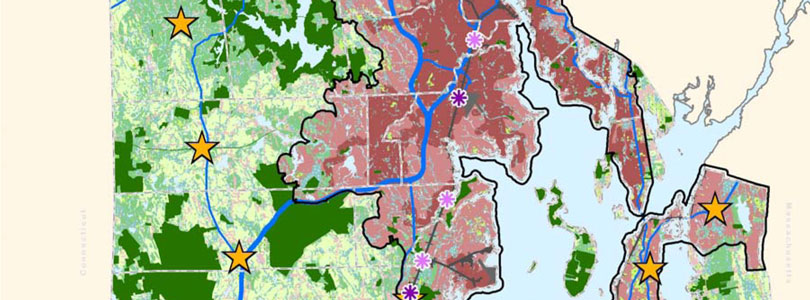Sustainable Development’s Hazy Definition in Rhode Island
Over the next few years, Rhode Island is expected to serve as a statewide platform for “sustainable development” initiatives that combine economic development, land use, housing, and transportation, according to a recent press release from Gov. Lincoln Chafee’s office.
The state Division of Planning will take charge of the effort as it was the recipient of a $1.9 million “Sustainable Regional Planning Grant (SCRPG) from the U.S. Department of Housing and Urban Development (HUD). The Division of Planning is expected to coordinate its efforts with various non-profit groups and other government agencies at the state and local level. The Department of Transportation, Rhode Island Housing and Grow Smart Rhode Island are among the key players.
Although the term “sustainability development” lacks a precise definition, it is evident from the “Three Year Work Plan” for “A Sustainable Rhode Island” that environmentalism will figure prominently within Gov. Chafee’s plan. The initial phase of the project, officially titled “Land Use 2025,” will work to roll back suburban communities, which are viewed as an environmental menace. The relevant section is as follows:
This pattern of low-density, large-lot, single-use and scattered sprawl development unnecessarily consumes vast natural resources, requires redundant taxpayer investments in facilities and infrastructure and is not sustainable. Land Use 2025 established an Urban Services Boundary (USB) that covers areas of the state with existing infrastructure resources and traditional population centers. It also built on the concept of growth centers – areas within and outside the USB that can be the target of denser development at rural, suburban and urban scales. The essential landuse question for Rhode Island is whether to continue to sprawl, or return to a more efficient pattern of land use in the USB and growth centers, inspired by traditional modes of development that have served the state well for over 300 years.
The Ocean State Current invited Gov. Chafee’s office to comment on the “Three Year Work Plan” and to offer up a precise definition of “Sustainable Development,” but did not receive a response. The concept was a central pill of “Agenda 21,” the 800-page global warming blueprint adopted at the United Nations Conference on Environmental Development (UNCED) at Rio de Janeiro in June 1992.
The language used in the U.N. document is “deliberately hazy,” Bonner Cohen, a senior fellow with the National Center for Public Policy Research, explained in an interview.
He cites the chapter on “Demographic Dynamics and Sustainability.”
The growth of world population and production combined with unsustainable consumption patterns places increasingly severe stress on the life-supporting capacities of our planet. These interactive processes affect the use of land, water, air, energy and other resources…. Population policy should also recognize the role played by human beings in environmental and development concerns. There is a need to increase awareness of this issue among decision makers at all levels and to provide both better information on which to base national and international policies and a framework against which to interpret this information.
“The lack of any clear understanding of what is and is not sustainable bestows a huge amount of discretionary power in the hands of regulators and other government officials acting in accord with a term whose meaning is withheld from the public,” Cohen warns.
The Federal Register of August 24, 1988, describes the terms and conditions of the HUD grant that is now driving policy in Rhode Island. The Environmental Protection Agency (EPA) is authorized to build and expand upon existing environmental programs that further the goals of Agenda 21 at the federal, state, and local level.
The featured image for this post comes from a map provided in Land Use 2025, showing the intended condensing of development into an urban corridor within an “urban services boundary,” represented as the black line.




